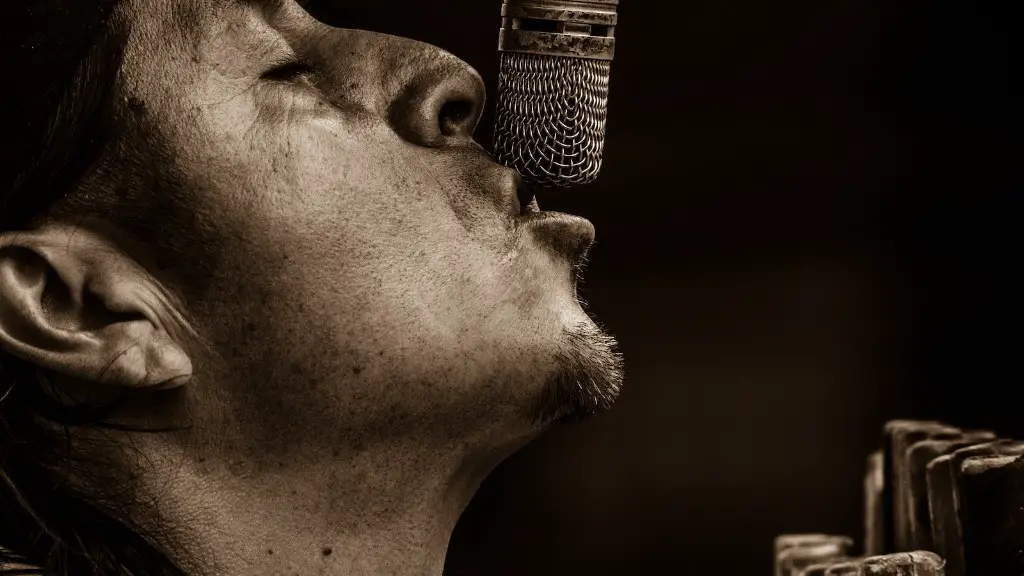A blues song is a sad, slow song that is often about love and heartache. If you want to write a blues song, start by choosing a slow, minor key. Then, write lyrics that tell a story or express your emotions. For the melody, try to use the pentatonic scale, which is common in blues music. Finally, add some bluesy guitar licks or solos to give your song some personality.
The blues is a music genre that originated in the African-American communities of the United States in the late 19th and early 20th centuries. It is characterized by its use of the blue note and its characteristic form, the twelve-bar blues.
The blues song form is usually composed of three chord progressions, with each progression typically lasting four bars. The first progression is the most important, and is known as the “turnaround.” The turnaround usually consists of the I, IV, and V chords, which are the root, fourth, and fifth chords of the major scale. The second progression is typically the IV and V chords, while the third progression is the V chord.
In order to write a blues song, you will need to come up with a catchy melody and lyrics that tell a story. The best way to do this is to start with the turnaround, and then come up with a main riff or hook that will carry the song. Once you have the main riff, you can start filling in the rest of the melody and lyrics.
Remember, the blues is all about feeling, so make sure that your song reflects that. The best way to do this is to write from the heart, and to be as honest and
How is A blue song structured?
A 12-bar blues is a type of blues music that is divided into three four-bar segments. Nearly all blues music is played to a 4/4 time signature, which means that there are four beats in every measure or bar and each quarter note is equal to one beat.
A blues rendition of a tune or melody generally involves adding a shuffle (or slowing down to one), converting to 4/4 if not already, using the 12 bar format (or 8 or 16 or even 20 bar variants) and adding a couple of pentatonic riffs with the “blue note”, a diminished fifth. This gives the song a more soulful and emotive feel that is characteristic of the blues genre.
What are the 3 chords in blues
The blues progression is a classic chord progression that uses the I, IV, and V chords of the key you are in. In the key of E, the I chord is E7, the IV chord is A7, and the V chord is B7. The I chord shares the same letter as the key itself (an E7 chord when we’re in the key of E). This progression is a great way to create a bluesy feel in your music.
The elements of music in the blues include bent notes, which are usually the flattened third, fifth or seventh note of the scale. The performer often improvises over a chord progression, and melismas are heard in many blues vocal melodies.
What are at least three 3 types of blues music?
The blues is a genre of music that originated in the African-American communities of the southern United States in the late 19th and early 20th centuries. The term “blues” refers to the “blue notes” which are the flattened third and seventh notes of the major scale. There are many different types of blues music, each with its own unique style and sound.
Boogie-woogie is a style of blues music that is characterized by a heavy, repetitive bass line and a driving, rhythmical feel. Delta blues is a type of blues music that originated in the Mississippi Delta, a region of the southern United States. It is characterized by a mournful, melancholic sound and often features slide guitar.
Chicago blues is a type of blues music that originated in the city of Chicago, Illinois. It is characterized by a heavy, electric guitar-based sound and often features horns. Jump blues is a style of blues music that is characterized by a fast tempo and a swinging, upbeat feel.
Soul blues is a type of blues music that combines elements of soul music and the blues. It is characterized by a soulful, emotive sound and often features gospel-style vocals. Texas blues is a type of blues music that originated
The 12-bar blues song form is one of the most popular and commonly used song forms in blues music. This form is made up of 12 bars, or measures, of music, which are repeated throughout the song. The blues song form is simple, yet effective, and allows for a lot of creativity and variation within the form.
What 4 chords do blues songs use?
The blues can be thought of as a three-part song structure, with each section being four bars long. The first section is the ‘A’ section, the second the ‘B’ section, and the last the ‘A’ section. The ‘A’ section is the most important, as it contains the Hook, which is the repeated phrase that gives the blues its distinctive sound. The ‘B’ section is where the majority of the harmonic interest and soloing takes place, while the ‘A’ section provides the framework for the rest of the song.
If you want to play the blues, there are 3 essential techniques that you need to know: string bending, vibrato, and slides.
String bending is when you play a note and push it upwards to change the pitch. This is a great way to add expression to your playing and make the blues sound more soulful.
Vibrato is an expressive technique that is essential for all blues players to know. It adds a lot of feeling to your playing and can really make the blues come alive.
Slides are another important technique in the blues. They involve sliding your finger up or down the fretboard to change the pitch of the note. This is a great way to add movement and interest to your playing.
What tuning is best for blues
Open G tuning is often used in blues and folk music to create a rich, soulful sound. Many classic rock songs also use open G tuning to add a distinctive bluesy tone. This tuning is also popular in modern rock music that draws from classic rock influences.
There are a lot of different keys that can be used for blues music, but the two most common keys are E and A. There are others that are used occasionally, but these two are by far the most popular.
What notes are used in blues?
The blue notes are ♯ 4/♭5 in the minor blues scale and ♭3 in the major blues scale. The more common minor blues scale has the semitone pattern 1-2-♭3-4-♭5-♭7, and the major blues scale has the pattern 1-2-♭3-3-5-6.
The blues is a great way to improve your guitar skills. These 10 easy blues songs will help you build your repertoire and improve different areas of your playing.
Where to start with blues music
The 10 best blues albums for beginners to own on vinyl are:
1) Lead Belly: Where Did You Sleep Last Night?
2) Robert Johnson: King of the Delta Blues Singers
3) Elmore James: The Definitive Collection
4) Muddy Waters: At Newport 1960
5) BB King: Live at the Regal
6) John Mayall: Bluesbreakers With Eric Clapton
7) Albert Collins: Frostbite
8) Stevie Ray Vaughan and Double Trouble: Live at Carnegie Hall
9) William Clarke: The Spontaneous Combustion of William Clarke
10) Koko Taylor: Royal Blue
BB King, Muddy Waters, Billie Holiday, Ray Charles, Jimi Hendrix, Etta James, Otis Redding, and Nina Simone are some of the most famous and greatest blues singers of all time. They have made incredible contributions to the genre and have inspired countless other artists. If you’re a fan of blues music, then these are some of the singers that you absolutely need to check out.
What is the rhythm of blues?
Rhythm and blues, commonly known as R&B, is a musical genre developed by Black Americans in the 1940s that’s been continuously refined through the present day. R&B derives from gospel, jazz, folk, and traditional blues music and emerged in tandem with rock ‘n’ roll. As a musical style, R&B is characterized by a heavy backbeat, soulful vocals, and a focus on melody and emotion. R&B has been a staple of Black American music for decades, and its influence can be heard in other genres like hip-hop, pop, and rock.
Handy’s work helped to popularize the blues genre and he is considered one of the most important figures in early American popular music. His songs often described the hard realities of life for African Americans in the early 20th century, including poverty and racism. Handy’s work was instrumental in spreading the blues throughout the United States and he remains an important figure in American music history.
What are the 12 blues scales
The C-major blue scale includes the notes C, D, Eb, E, G, A, and C. The Eb is the only blue note in this scale. The F-major blue scale includes the notes F, G, Ab, A, C, D, and F. The Ab is the only blue note in this scale. The G-major blue scale includes the notes G, A, Bb, B, D, E, and G. The Bb is the only blue note in this scale.
The 12 bar blues is the most common blues song form. It is made up of three 4 bar phrases in AAB Song Form. The fundamental structure of 12 Bar Blues is three four-bar lines or sections.
Final Words
The blues is a music genre that originated in African-American communities in the late 19th and early 20th centuries. The blues is a central element of jazz, as well as a major influence on rock and roll, rhythm and blues, and hip hop.
To write a blues song, start by coming up with a catchy opening line. Write a few verses about your subject matter, using the 12-bar blues format. In the 12-bar blues, each verse is 12 bars long, and each bar contains 4 beats. The verses should alternate between the dominant chord and the subdominant chord.
After you’ve written your verses, it’s time to write your chorus. The chorus of a blues song is usually 8 bars long, and contains the same lyrics that are repeated throughout the song. To end your song, write a final verse that resolves the conflict or story that you’ve been telling throughout the song.
A blues song typically has 12 bars, with each bar having 4 beats. The song is usually in a minor key, with the first and third notes being a semitone lower than the tonic. The melody often has a repeated figure, such as a 3-note figure or a 4-note figure. The lyrics often tell a story of loss or heartache.


